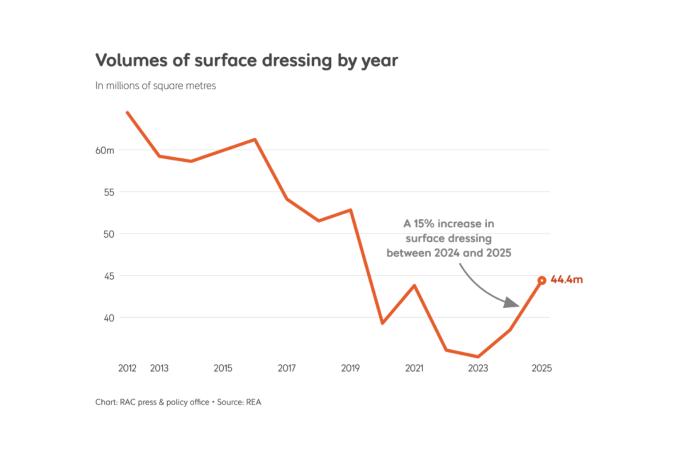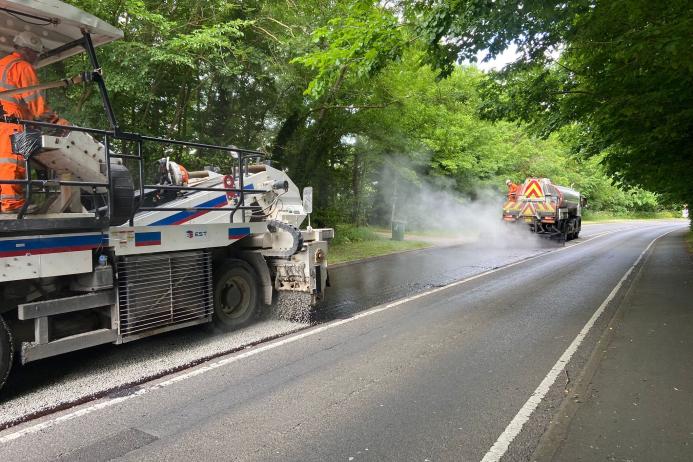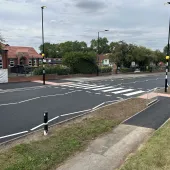New data points to encouraging uptick in pothole prevention work
15% more surface dressing work carried out in 2025, but pothole prevention work still 32% below 2012 level
VITAL surface dressing work on Britain’s local roads that is proven to prevent potholes forming increased by 15% this year, new data shared with the RAC reveals.
Figures from the Road Emulsion Association (REA) show around 44.4 million square metres of surface dressing – enough to treat the equivalent of around 4,340 miles of road – was applied over the April-to-September preventative maintenance season in 2025, compared to 38.5 million in 2024.
This year’s manufacturing, sale, and use of bitumen emulsions for surface dressing were also up 25% on 2023 (35.3 million square metres), the year that saw the lowest reported volume since records began in 1978. While it is encouraging that volumes reported by REA increased in 2025, they are still 32% below the amount applied in 2012 (64.4 million square metres).
The data collected by the trade association, which represents UK bitumen emulsion manufacturers, shows the messages of campaigns by the REA, the RAC, and the Road Surface Treatments Association to get local authorities to understand the benefits of preventative maintenance are starting to make a difference to drivers.
The RAC is also aware that the Government is proactively encouraging councils to carry out more surface dressing and preventative treatments on their roads, and has even gone as far as requiring authorities to report how much of this work they have done in previous years – and how much they plan to do.

RAC head of policy Simon Williams said: ‘These new figures are a step in the right direction for drivers who are plagued by potholes on Britain’s roads every time they get behind the wheel.
‘We welcome more local highway authorities carrying out surface dressing work, as this is proven to extend the life of roads by 10 to 15 years by sealing cracks and stopping water getting in and, ultimately, stopping surfaces breaking down.
‘We hope even more surface dressing will be carried out going forwards as the Government is on board with the preventative maintenance message that the RAC, REA and the Road Surface Treatments Association have been advocating.
‘We’re also very pleased to see the Government asking councils to show how much preventative maintenance work they’ve carried out over the last five years and how much they plan to do in this financial year. We remain convinced that prevention, rather than cure, is the answer to smoother, safer roads.’
REA consultant and secretary Kevin Maw said: ‘We reported a 9% increase in bitumen emulsion volumes in 2024, so to report a bigger increase for the second-year running is encouraging. We believe the surge in potholes over recent years directly correlates with the reduction in surface dressing – a successful preventative maintenance treatment that keeps roads in good condition.
‘Investing in preventative highways maintenance is crucial to protecting one of the country’s biggest assets and it’s clear that this message is finally getting through. We hope it continues.’
Dorset Council principal project engineer Matthew Ings said: ‘Dorset Council has long recognized the benefits of surface dressing as a cost-effective, low-carbon solution to extending the life of our highway network, reducing the need for frequent maintenance and minimizing disruption to road users. With the recent addition of an encapsulation product, we’ve seen a marked improvement in public perception – thanks to a finished surface that closely resembles a conventionally surfaced road, with a clean, open, and positively textured appearance.’
Government road condition data analysed by the RAC shows half of local highway authorities in England did not use any form of preventative maintenance on their A roads in the 2023/24 financial year. For B, C and unclassified roads, 36% of authorities failed to carry out any of this work*. The same data illustrate a huge decline in the percentage of the overall road network receiving preventative treatments.
*Data for 2023/2024 to 2017/2018 provided by the Department for Transport. 'Road maintenance' defined as road strengthening, preserving, or resurfacing (ie not filling potholes)










